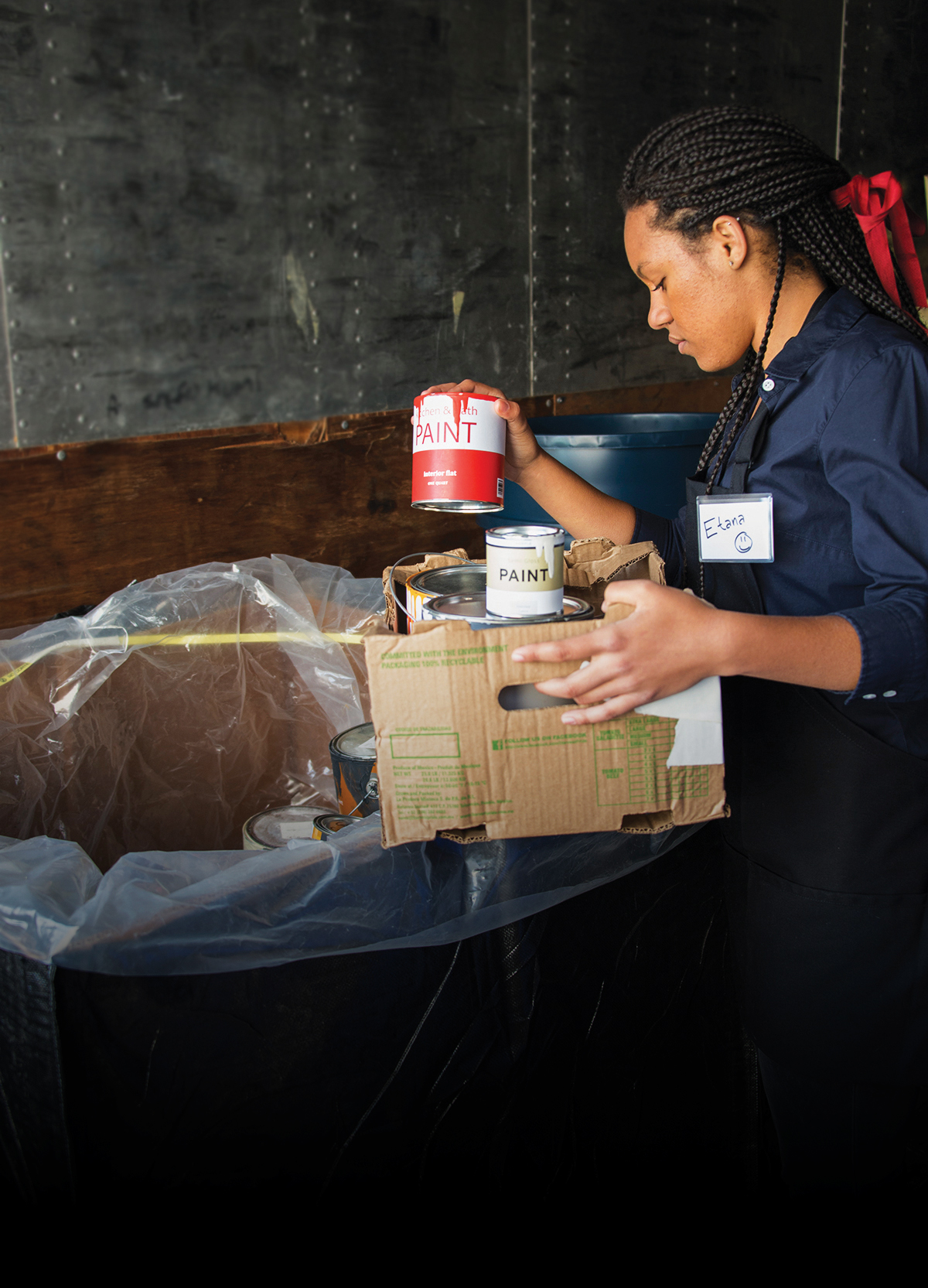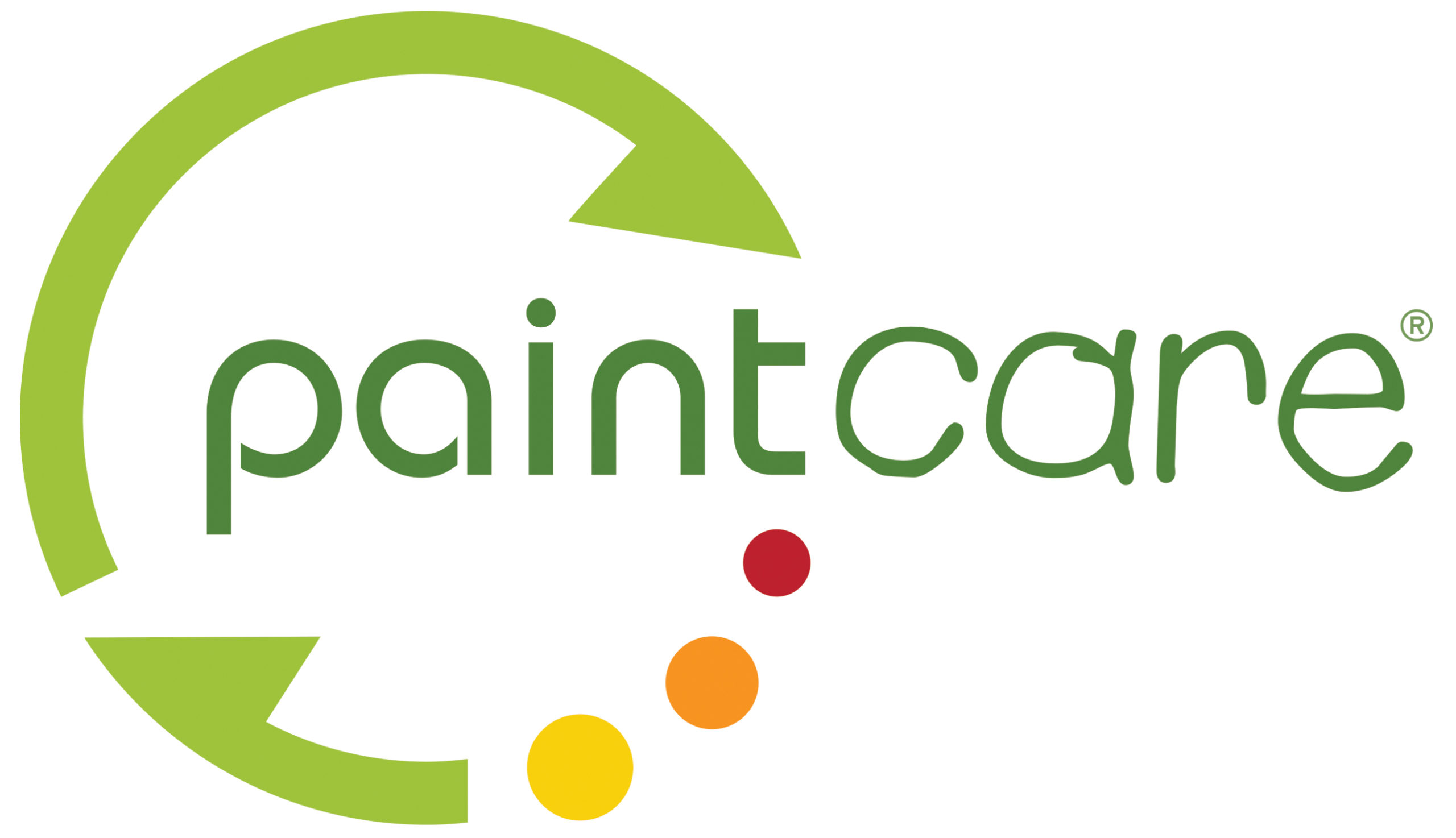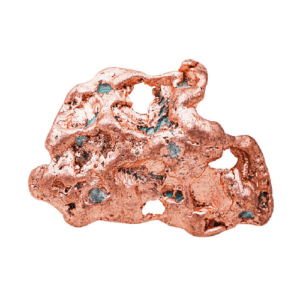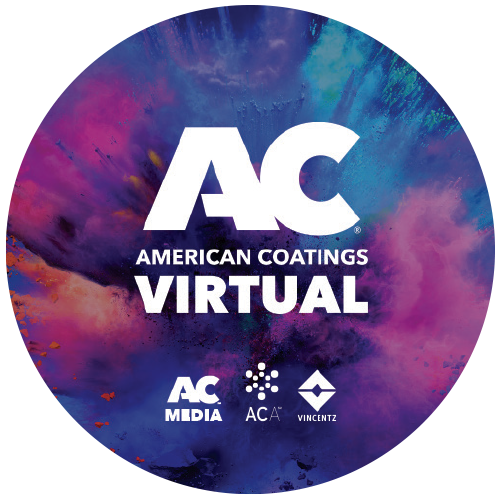ANNUAL REPORT 2020
American Coatings Association Scroll down to read more or click here to download the full reportMESSAGE FROM THE PRESIDENT
Dear Members,
2020 was a year of tremendous challenges for all of us. At the outset of this global pandemic, our member companies responded early and with great leadership and empathy. From adopting new health and safety protocols for employees, to an astounding outpouring of donations — from masks, gloves, and lab coats donated to frontline workers; to millions of dollars in donations to support community and global relief and recovery efforts; to pivoting to manufacture millions of gallons of hand sanitizer; to providing necessary coatings for equipment like ventilators, oxygen tanks and hospital bed frames — the U.S. coatings industry response was extraordinary.
During that time, ACA fought for the industry’s right to continue operating, as varied state emergency orders impacting business operations emerged. ACA pushed for our member facilities to stay open, launching a “Coatings Are Essential” campaign. Those efforts resulted in our industry being designated an essential critical workforce, and a key participant in the national response to COVID-19 and the nation’s economic recovery.
ACA’s 2020 Annual Report reflects on these efforts, as well as others where we supported and advanced the industry’s interests over the last year.
This Annual Report highlights four areas where ACA focused considerable energy on behalf of industry:
- COVID-19 Efforts & Resources
- Sustainability & Environment
- PaintCare Program
- Chemical Controls Advocacy
These focus areas fit with the association’s core mission to be the industry’s chief advocate; champion our industry’s commitment to environmental protection and product stewardship; and work to mitigate impacts of onerous regulations and legislation.
The final section in the Annual Report, the “Additional Accomplishments,” showcases the breadth of ACA’s engagement in 2020, and the marked successes of its concerted efforts.
In the year ahead, we will work to ensure the welfare and advancement of industry. Your leadership and support make that possible.
Thank you.

Andy Doyle
President & CEO
American Coatings Association

COVID-19 EFFORTS & RESOURCES
In 2020, efforts responding to state emergency orders issued around the coronavirus pandemic, federal legislative action, and support for industry businesses to stay open was paramount for ACA.
Supporting Industry Operations
From the onset of lockdown discussion, ACA worked successfully with the Department of Homeland Security’s (DHS) Cybersecurity and Infrastructure Security Administration (CISA) to develop specific language acknowledging the essential nature of the paint and coatings industry workforce. This CISA Guidance on the Essential Critical Workforce served as the benchmark in many state emergency orders to determine whether and how businesses could continue to operate during the pandemic.
ACA’s work with CISA was directly responsible for the inclusion of the paint industry as an essential critical sector, and resultingly, many paint and coatings facilities across the country were able to continue operations with minimal interruption during the pandemic.
ACA also developed a fact sheet to demonstrate that “Coatings Are Essential,” and a necessary participant in the COVID-19 response. This input was used effectively by ACA in advocating for the industry, both to ensure policymakers that continued manufacturing and R&D was essential to the pandemic response, and to reassure the public that the industry could do its work safely, protecting both employees and their value-chain partners in the process.
ACA successfully targeted these advocacy efforts across states, including Pennsylvania, Colorado, and Michigan, to help keep member companies open and operating in compliance with state emergency orders.
ACA also sought to provide direct support to companies to keep their workers safe. As such, in the early days of the pandemic, ACA coordinated efforts with Federal Emergency Management Administration (FEMA) to provide over 52,000 cloth face masks to employees of member companies.
Providing Critical Information Resources
With so many federal and state agency orders and directives being released and changing in fast succession, ACA created a dedicated hub for COVID-19 resources and information for members.
The resource page on ACA’s website highlights relevant state and local emergency orders impacting businesses, and provides internal and external links to information and guidance from federal and state agencies, as well as ACA’s own interpretive guidance. Resources relate to:
- Critical information from the Centers for Disease Control (CDC) and Prevention Manufacturing Facility Protocols;
- Occupational Safety & Health Administration (OSHA) guidance germane to COVID-19 and workplace safety, including protective measures in manufacturing facilities, workplace safety posters, PPE and respiratory protection;
- DHS protocols; Department of Transportation resources; Equal Employment Opportunity Commission coronavirus information; guidance from the U.S. Environmental Protection Agency (EPA), as well ACA’s own digest of U.S. EPA’s temporary enforcement discretion policy during the COVID-19 pandemic, with particular focus on its impact to the paint and coatings industry; and
- An array of information on Small Business Administration (SBA) Loans and Internal Revenue Service information and guidance, including Coronavirus Aid, Relief, and Economic Security (CARES) Act, Small Business Administration’s Paycheck Protection Program (PPP) and the Economic Injury Disaster Loan (EIDL) Program, and ACA’s analysis of the applications for industry members.
ACA also hosted a series of free webinars for members, offering insight on topics important to companies, including Interpreting CISA Guidance for Identification of Essential Critical Infrastructure Workers & Compliance with State Emergency Orders; Workplace Safety — COVID-19 Duties, Planning and Response; Business Interruptions and Coronavirus – Force Majeure and Other Contract and Insurance Considerations; CARES Act Loan Programs and Tax Relief; Update on the Paycheck Protection Program; and Employee Benefits in the Time of COVID-19. All webinar recordings were made available to members on the ACA COVID-19 Resources webpage.
Finally, to support industry’s COVID-19 response efforts, ACA provided guidance to several member companies on producing hand sanitizer during the initial crisis. The association also publicly touted the astounding industry efforts to aid in combating the coronavirus, from producing hand sanitizer, to PPE donations, to charitable contributions, telling those stories and championing industry efforts.

Urging Congressional Protections and Support for Industry
To aid industry, ACA launched a successful grassroots campaign, sending over 300 emails to members of Congress urging them to fund and renew funding for the Payroll Protection Program. The CARES Act initially authorized up to $349 billion in funding for the PPP loan program, to aid eligible small businesses with payroll and other eligible costs during the coverage period.
While businesses generally were eligible for the PPP’s favorable loan terms and relaxed application requirements if they have less than 500 employees, paint and coatings manufacturing companies (NAICS code 325510) could qualify if they have fewer than 1,000 employees. PPP loan amounts were available for the lesser of $10 million or 250 percent of qualifying monthly payroll costs, and funds could be used for payroll and other costs, including wages, salaries, benefits, and leave pay for many employees.
The PPP also featured a loan forgiveness program for up to 100 percent of eligible expenses during a portion of the coverage period, a feature which ACA urged be extended in further legislative packages.
ACA also urged Congress to provide employer liability protections for companies who followed CDC and federal and state guidance for maintaining safe workplaces.


SUSTAINABILITY & ENVIRONMENT
Over the past year, ACA focused on building various programmatic aspects of its sustainably efforts. Guided by its Sustainability Committee, ACA concentrated on a comprehensive approach for the coatings industry to address today’s sustainability issues and challenges, both domestically and internationally.
Product Category Rules
In 2020, ACA published a Product Category Rule (PCR) for Powder Coatings, engaging a third-party developer of public health standards certification programs to develop the PCR. This is the third PCR that ACA has facilitated for industry, following publication of its PCR for Architectural Coatings and PCR for Resinous Floor Coatings.
A PCR provides an agreed-upon framework for measuring the environmental impacts of a product based on a defined set of criteria. This allows manufacturers to conduct Life-cycle Assessments (LCAs) on their products in a standardized way, and publish this information in an Environmental Product Declaration (EPD), if they so choose.
The utility of PCRs is timely and considerable, since retailers, architects, standard-setting bodies, and consumers are increasingly considering or requiring information about the life-cycle impacts of products when selecting which products they choose to sell, specify, or use.
Notably, LCAs are reframing the discussion about the actual environmental impacts and benefits of coatings. There has been steadily increasing demand for LCAs because of Leadership in Energy and Environmental Design (LEED) credits and increasing regulatory pressures. ACA’s PCRs are important tools that assist members with the publication of verifiable EPDs and aid members in achieving additional LEED credits.
Recognizing the need to respond to this market demand, ACA is also facilitating development of a PCR for Coil Coatings, now underway. With these new PCRs, ACA aims to position the industry to compete with other building materials that already have PCRs, and continue to grow ACA and industry presence in the PCR space.
ACA Architectural Coatings Sustainability Program
Given the demand for industry product sustainability information sought by architects, designers, end users, in 2020, ACA progressed its work with a third party, NSF International, to develop a multi-attribute ACA Architectural Coatings Sustainability Program. The program would be incorporated into LEED through pilot credit 112, allowing members to achieve maximum credits under LEED by streamlining testing requirements. The ACA program would also help mitigate problematic green building standards and building codes that were developed without industry input.
Specifically, the ACA program in development aims to:
- Use an LCA approach to evaluate the environmental impacts of architectural coatings on the environment and provide transparency to the public on these impacts;
- Gather and analyze industry performance metrics;
- Identify and communicate environmentally preferable products, and provide market recognition for conforming products and manufacturers; and
- Recognize what paint and coatings companies are already doing in the green building space.
Over the past year, ACA worked with stakeholders to refine program criteria and collect product and company data from stakeholders on the following:
- Social Responsibility
- Low Emissions Products
- Low Impact Materials
- Manufacturing & Supply Chain Management
- Life-Cycle Assessment
- Corporate Sustainability
- Performance Attributes & Durability
ACA’s program framework timeline is set to coincide with the 2021 American National Standards Institute (ANSI) public comment period. ANSI is a private, non-profit organization that administers and coordinates the U.S. voluntary standards and conformity assessment system.
2020 ACA Sustainability Report
In 2020, ACA published its second ACA Sustainability Report, following publication of its inaugural report in 2018. The 2020 ACA Sustainability Report focuses on the coatings industry’s Sustainability efforts as framed by five specific United Nations Sustainable Development Goals (UN SDGs):
- Good Health and Well-Being (UNSDG#3)
- Decent Work and Economic Growth (UNSDG#8)
- Industry, Innovation and Infrastructure (UNSDG#9)
- Responsible Consumption and Production (UNSDG#12)
- Partnerships for the Goals (UN SDG #17)
This report shares examples of the critical role coatings play in contributing to the UN SDGs, showcasing industry’s advancements in product design technology and processes that have led to significantly reduced environmental impact; industry’s landmark environmental stewardship program PaintCare; and ACA member company stories of how they undertake Sustainability.
Development of a Global Sustainability Report
Over the last year, ACA, as Secretariat of the World Coatings Council, surveyed council members on their sustainability efforts. The results showed that most member associations have established programs that demonstrate the industry’s role in supporting sustainable development, a key factor in affirming the essential nature of the industry and its products.
At the council’s March 2020 Annual Meeting, a Sustainability workshop focused on determining how the industry could work collectively to develop meaningful programs and practices that support the UN SDGs. Working in small groups, delegates identified SDGs and ways to establish Key Performance Indicators (KPI’s).
Now, ACA is spearheading the World Coatings Council’s development of a comprehensive global industry sustainability report and identifying ways in which the global industry can affirm and advance the UN SDGs.
Addressing Plastics
The use and future of plastic materials utilized by industry is being scrutinized by governments, environmental groups, and academic researchers around the world. From the breakdown of macroplastics and plastic materials used in formulations for consumer and industrial products that researchers cite as the cause for the rise in microplastics throughout the world’s water sources, to re-examining product packaging and use of single use plastics — at the state level, legislative bodies and regulatory agencies are responding with proposals to either limit those industry uses to curtail environmental impacts, or with Extended Producer Responsibility (EPR) measures that would fall on industry. For the first time, a similar bill has been introduced at the federal level, signifying a trend that is gaining momentum and will likely see more action in the coming year.
In 2020, ACA worked on a holistic plastics strategy to address both the issue of microplastics and plastic packaging/containers. On both fronts, ACA is actively working to achieve a realistic view of the paint and coatings industry’s use of plastics and role in the environmental impact discussion. That understanding will direct ACA’s industry’s advocacy stance in opposition to varied regulatory proposals that would place restrictions, fees, or extended producer responsibility mandates on industry.
Microplastics
Where microplastics are concerned — that is small pieces of plastic, typically less than 5 mm in size — studies out of Europe, Canada, and California have specifically identified coatings that could potentially be unfiltered by water treatment facilities or result from decomposition of coating sand discharged to the marine environment, as presenting potential health risk to marine animals and food supply. Already, the European Chemicals Agency (ECHA) has proposed requirements to limit intentional industry uses of microplastics in products including paint. The proposed restriction in Europe comprises three types of measures: product sales restrictions, labeling, and reporting requirements.
While the EU product sales restrictions are not relevant to paint — largely due to World Coatings Council efforts and successful advocacy by ACA’s European industry partners, ECHA issued derogations (exemptions) for the polymer fragments in paints and coatings, acknowledging that, while falling within the definition of microplastic, they are not contributing to microplastics release — coating manufacturers would still need to report on the use of any type of microplastics in consumer and industrial coatings, as well as develop product labels to help users properly manage wastes to limit microplastic discharges (i.e., during cleanup).
If adopted, Europe’s microplastic regulations could be effective in 2022. But regulatory action and discussion is not limited to Europe. Canada has initiated a regulatory process under the Canadian Environmental Protection Act to regulate microplastics, releasing a Draft Science Assessment of Plastics Pollution, that could be utilized in the development of future microplastic regulations.
And in the United States, EPA has awarded grants for studies to address microplastic pollution; California’s California State Water Resources Control Board formally adopted a definition of microplastics in drinking water and is developing standard microplastic testing for a 4-year study; and the California State University Council on Ocean Affairs, Science & Technology is conducting research to quantify microplastic sources, ecotoxicology, and the economics of microplastics source control.
ACA has created a Plastics Workgroup and is coordinating with the Word Coatings Council to study what is being done by industry, regionally, to address current uses of microplastics, including efforts to control paint releases (i.e. spills, overspray control, surface prep releases, post-application clean-up, etc.). Additionally, ACA is considering research protocols to evaluate microplastics and their impacts including quantitative release estimates from coatings-related sources.
Single-Use Plastics, Extended User Responsibility
Alongside the microplastics discourse, management challenges of the large volume of discarded plastic containers and packaging products has resulted in varied state proposals calling for EPR measures and single-use packaging regulations. These include proposals to impose recycling rates, collection requirements, and fees on industry.
In 2020, ACA efforts helped stall several state bills focused on single-use plastic containers from advancing, including those in Vermont and Maine. A similar California bill was also not successful. While these bills differed in their construct, each would have imposed significant fees on paint manufacturers and required strict recycling standards. ACA’s engagement allowed for negotiation of advantageous language in these bills, while still articulating the significant negative impacts on the industry, but none of these bills passed their legislatures this year. The result is a reprieve from significant fees that would have been levied on manufacturers in three states.
Notably, these are states where PaintCare operations exist, where ACA is able to connect the value and role of the industry product stewardship program in collecting post- consumer paint containers.
However, while ACA and industry were able to stave off these regulatory schemes, ACA is seeking to better understand the quantity and type of packaging that is used in the coatings industry and how this packaging is recycled or disposed.
To that end, in 2020 ACA solicited proposals to conduct research on current management of leftover or post-consumer architectural paint containers/cans in the United States. The aim is to outline methods, barriers, and opportunities for the disposal and recycling of empty paint cans and containers, including those used for stain, varnish, colorant containers, and other architectural coatings.
Once the study and metrics are developed with an independent firm, results should help determine a path forward to improve recycling and waste management of paint containers in the industry.

PAINTCARE PROGRAM
ACA’s PaintCare program is a trailblazer in the world of industry product stewardship. ACA launched the industry- led end-of-life management program for post-consumer paint in 2009, and has since implemented program operations in Oregon, California, Colorado, Connecticut, Maine, Minnesota, Rhode Island, Vermont, and the District of Columbia, with new programs set to launch in New York and Washington in 2021.
PROGRAM STATS TO DATE

45+ MILLION GALLONS
Post-consumer Paint Collected
525,000
Gallons Paint Collected each Month (estimate) in Nine Programs
191
Registered Manufacturers
5,300+
HHW and Other Events, including 200+ PaintCare- run Events
4,200+
Large Volume Pickups
1,800
Year-round Paint Drop-off Sites
Spearheading Industry’s Product Stewardship Efforts
2020 marked the beginning of PaintCare’s second decade of operations, and it was a year that demonstrated the program’s resilience in the face of adversity. COVID-19 challenged the program’s routine operations; yet, despite those hurdles, the industry-led stewardship program for post-consumer paint reached new heights. To date, PaintCare has collected and recycled (or responsibly managed) over 45 million gallons of leftover paint — managing nearly 525,000 gallons monthly. Of that total, approximately 78 percent was latex-based paint, and 22 percent was oil-based paint. Meanwhile, PaintCare began developing major new programs for Washington and New York, set to launch in 2021. Following California, these are poised to be the next largest state programs.
In the states and jurisdictions where the program is currently operating, PaintCare has continued to serve households and businesses with more than 1,800 year- round paint drop-off sites, most of which are paint retailers. In addition to year-round sites, PaintCare has held more than 200 paint collection events in underserved areas and managed paint from more than 5,000 household hazardous waste (HHW) events to date. PaintCare has also performed more than 4,200 large-volume pickups (LVP) for businesses and households with at least 200 gallons of paint, measured by container size.
In 2020, PaintCare’s achievements received acknowledgement and distinction for demonstrating the U.S. paint and coatings industry’s leadership in the product stewardship sphere. In March, PaintCare’s California program was named “Best Public/Private Partnership” by CalRecycle in recognition of the success of the program, its partnerships with 120 HHW facilities throughout California, and its support of more than 300 HHW events each year in that state alone. In September 2020, PaintCare earned international recognition, winning the Recycling and Waste Management Award for “Best Paint Recycling Initiative-USA,” given by BUILD, a UK-based publication that covers innovations in the global building and construction industries.
COVID-19 Impacts
 PaintCare experienced significant service impacts from the COVID-19 pandemic beginning in March 2020 and was well positioned to navigate this ongoing challenge. PaintCare’s newly formed crisis communications team analyzed operational impacts, organized a response, and ensured clear communications to stakeholders. By the end of March, PaintCare had temporarily suspended the LVP service, postponed all paint drop-off events planned through May, and suspended all in-person site visits by staff. At peak, 805 drop-off sites (45 percent) reported temporary closures or suspensions of post-consumer paint collection, including 640 retail sites and 103 HHW programs. PaintCare placed a prominent alert on its website directed to a special status page informing the public about service impacts, encouraging delaying paint drop off until local and federal guidance to avoid discretionary travel lifted, and requesting that appropriate precautions be taken when using PaintCare’s sites and services. An alert was also added to the site locator tool, PaintCare’s most used web resource, advising the public to confirm site availability before attempting to drop off paint.
PaintCare experienced significant service impacts from the COVID-19 pandemic beginning in March 2020 and was well positioned to navigate this ongoing challenge. PaintCare’s newly formed crisis communications team analyzed operational impacts, organized a response, and ensured clear communications to stakeholders. By the end of March, PaintCare had temporarily suspended the LVP service, postponed all paint drop-off events planned through May, and suspended all in-person site visits by staff. At peak, 805 drop-off sites (45 percent) reported temporary closures or suspensions of post-consumer paint collection, including 640 retail sites and 103 HHW programs. PaintCare placed a prominent alert on its website directed to a special status page informing the public about service impacts, encouraging delaying paint drop off until local and federal guidance to avoid discretionary travel lifted, and requesting that appropriate precautions be taken when using PaintCare’s sites and services. An alert was also added to the site locator tool, PaintCare’s most used web resource, advising the public to confirm site availability before attempting to drop off paint.
Throughout this period, PaintCare halted advertising campaigns and pivoted to reuse in place of encouraging recycling. Field staff communicated with all drop-off sites and other stakeholders by phone and email and continued to manage program operations and site needs effectively.
By July 2020, while pandemic conditions continued to evolve, most of PaintCare’s operations came back online. LVPs were resumed; some of the planned drop- off events moved forward where possible; all but a few drop-off sites resumed post-consumer paint collection; staff site visits resumed in most areas; and planning commenced for fall 2020 public outreach campaigns.
Growing & Protecting the Program Across the Country
PaintCare’s operations continue to grow and mature. With new paint stewardship laws enacted in 2019, over the past year, PaintCare staff focused on developing new programs in Washington and New York, set to launch in April and November 2021, respectively. Following California, they will be PaintCare’s second and third largest programs by population. In 2020, PaintCare drafted and submitted program plans to state oversight agencies in both states ahead of deadline.
ACA also continued to develop inroads in other new states, with a long-view strategy to engage with the state legislators to increase understanding of Product Stewardship and become champions of PaintCare legislation. ACA shepherded paint stewardship legislation in Massachusetts, Maryland, New Hampshire, and New Jersey.

In New Jersey, bills passed both the New Jersey Assembly and Senate, and the legislation was sent to Gov. Phil Murphy for his signature in January 2020. However, the governor pocket-vetoed it. A new bill has already been introduced in New Jersey and ACA is working with the governor’s office to address his concerns. In Maryland, the bill passed the House of Delegates and had a very good chance of passage in the Senate; however, the legislature adjourned 30 days early due to the COVID-19 pandemic. At this writing, Massachusetts’s legislature is still in session, and efforts continue to move that bill toward passage.
ACA will continue to pursue programs in these states and others, working with lawmakers and stakeholders to fully understand the program and its environmental and cost benefits.
In addition to encouraging new states to embrace PaintCare, ACA worked in 2020 to protect state programs already in place. In Rhode Island, where PaintCare program operations began in June 2014, ACA was once again successful in convincing the Rhode Island Senate to reject a bill that would have required the oversight agency to allow for public bids to operate the paint stewardship program. And in Connecticut, where program operations commenced in July 2013, ACA avoided any action on a bill that would have decreased the amount of the PaintCare fee assessment.

CHEMICAL CONTROLS ADVOCACY
Increasingly, federal, state, and international regulatory agencies are developing programs to encourage chemical substitution and phasing out of products deemed hazardous. To diminish any adverse impacts on industry products, ACA engages with these agencies to represent industry’s position. The following highlights some of those targeted efforts over the last year.
Engagement on Biocides
Biocides in paints and coatings are used to prevent microbial growth and degradation during manufacturing and product shelf-life, as well as to ensure the product does not spoil before being used, and also protect the paint film after application. Increasingly, low VOC waterborne coatings require the use of “in-can” preservatives. Without these, the paint can spoil and, in extreme cases, microbial decomposition can generate gases that rupture containers.
However, the expanding use of biocides in construction products, including paints and coatings, has resulted in increased scrutiny of their inherent safety by regulatory bodies worldwide. To date, the European Union, Canada, and the United States are all evaluating several biocides used in paints and coatings for risk to human health and the environment. On the health side, regulators express concerns about skin sensitization, carcinogenicity and reproductive toxicity, often based on a review of hazard characteristics and/or use in products that are directly applied to the skin.
ACA, through its Preservation Product Stewardship Working Group domestically, and working with the World Coatings Council internationally, has established an advocacy initiative to ensure continued availability of these critical raw materials in the United States and around the world. These efforts seek to support the availability of products to preserve paint in the container, protect the painted surface, and maintain desired conditions.
Preservatives Life-Cycle Assessment
In 2020, ACA conducted a larger, follow-up study to its 2017 investigation to assess the environmental performance of nine different architectural coating preservation scenarios using a Cradle-to-Grave LCA (the original 2017 study examined five scenarios). The primary goals of the LCA were to determine the environmental impacts and benefits that wet-state and dry-film preservatives play in architectural coating systems, and to see how reducing, eliminating, or replacing certain preservatives impacted the coating’s overall sustainability profile.
The study found that, relative to the baseline scenario, changing the preservation strategy increased the environmental burden of the system, ranging from a 50 percent higher impact to an almost 400 percent higher impact, depending on the specific scenario. The LCA models also showcased that the preservatives themselves were typically responsible for alternatives to traditional preservatives: notably, the legacy solvent-based system (which would not require a wet-state preservative), was the worst overall environmentally and demonstrates how much of an improvement the industry has made by moving from solvent-based to water-based chemistries for architectural products.
The study findings clearly affirm that the actual environmental impact of preservatives is extremely modest relative to their benefit, and the tradeoffs associated with preservative substitution are severe compared to the other parts of the coating formulation. Moreover, the significant amount of spoilage from improper preservation would lead to a staggering increase in waste generated by the coatings industry.
This study will help buoy ACA’s advocacy arguments about the critical role of preservatives in enhancing shelf-life, protecting the painted surface, and protecting the dried coating film from biologic growth.
Global Biocide Evaluations
Regulatory bodies in the United States, Canada, and the EU are all conducting evaluations of biocides on their own schedules. To date, Canada has completed a cluster analysis of eight biocides used in paints and coatings, and published draft re-evaluations. In May 2020, U.S. EPA published draft re-evaluations of several biocides common to paint and coatings. EPA is required to conduct re- evaluations every 15 years.
The EU has scheduled final evaluations of several isothiazolinones by the end of 2022. However, the EU has revised hazard classifications for several of these, requiring revised hazard labels at lower thresholds than the GHS thresholds. Some hazard classifications automatically bar the biocide from approval. Hazard classification of a biocide may also prevent manufacturers from using ecolabel and other similar marks on paint and coatings products with the classified biocide.
Notably, the United States, Canada, and the European Union have similar registration requirements for biocides. Typically, a manufacturer or importer must register a biocide for use in specified products or product types. The regulatory authority must approve use and specify any labeling requirements and concentration limits. Once a biocide is registered for use in a product, the product containing biocide does not need to be registered, unless the product label bears a public health claim related to the biocidal additive (e.g. “anti-viral,” “controls bacteria,” etc.).
However, in May 2019, Canada’s Pest Management Regulatory Agency (PMRA) implemented a ban of the commonly-used preservative OIT (octhilinone) over industry objections, both from the Canadian Paint and Coatings Association (CPCA), and ACA. With 45 percent of paint products sold in Canada being manufactured in the United States, the ban raised concerns for U.S. manufacturers. Many U.S. companies questioned the scope of the ban as it applied to raw materials with residual amounts of OIT. While a U.S. company could continue to use such raw materials to make paint products for the Canadian market if the OIT in the final product is not added for an intentional preservative effect, companies had to evaluate for an intentional preservative effect considering concentration of OIT in the final product, typical uses of OIT, and any claims related to biocidal properties on the label of the final product.
While ACA created extensive guidance for U.S. manufacturers to understand the implications of the ban, it supported CPCA’s advocacy efforts to reverse or mitigate the ban. CPCA’s efforts were successful, and in late 2020, PMRA re-instated the use of OIT in paint and coatings products at a slightly lower limit (1.2 to 1.8 Kg/1000 L). This action will ensure paint products access to a critical biocide preservative.
Coordinating Industry’s Response
To help align regulatory policy and practice in both the United States and Canada, in 2020, ACA and CPCA sought the aid of the U.S.-Canada Regulatory Cooperation Council (RCC). The RCC’s mission is to facilitate consistent health, safety, and environmental protection mandates and reduce unnecessary differences between their regulatory frameworks for similar products crossing the border both ways. Both ACA and CPCA have urged the RCC to provide a forum for stakeholders, including industry, consumers, and non-government organizations, to address and prioritize the biocides issues and the regulatory barriers. ACA and CPCA will continue to create and pursue opportunities for regulatory cooperation on this issue.
And Canada’s PMRA, in late 2020, agreed to CPCA’s request, supported by ACA, to form a new Working Group to promote the exchange of technical information. This will assist in the evaluation of material preservatives registered for use in the Coatings Adhesives Sealants and Elastomers (CASE) sector in Canada, while improving the industry’s understanding of Canada’s pesticide regulations.
ACA is coordinating a concerted advocacy response on biocides through its Preservation Product Stewardship Working Group, collaborating with the American Chemistry Council’s Biocides Panel and U.S.-based biocide manufacturers to develop comments on EPA’s biocide re-evaluations. The group convenes weekly to coordinate both biocide supplier and coatings manufacturer efforts. In 2020, ACA completed a survey that provided much needed input on biocide management practices at coatings manufacturing facilities, as well as information on EPA assumptions related to consumer and commercial airless sprayer usage rates.
ACA is also working through the World Coatings Council to consider methods of sharing health and safety data to provide regulators with accurate exposure information specific to paint and coatings products. These efforts aim to help regulators understand industry’s stance on biocide use and allay any deleterious regulatory impacts on industry.

Engagement with EPA on TSCA
Scoping Documents Data Sources
In April 2020, U.S. EPA published 20 draft scoping documents for high-priority chemicals undergoing Risk Evaluation under the Toxic Substances Control Act (TSCA). These are the 20 high priority chemicals that EPA designated for TSCA Risk Evaluation in December 2019. The scope documents include the proposed conditions of use, hazards, exposures, and the potentially exposed or susceptible subpopulations that EPA expects to consider in the TSCA risk evaluations.
ACA submitted extensive comments on several of the high- priority chemicals, but highlighted a major flaw in the scoping documents: EPA’s failure to identify specific data sources to evaluate each condition of use and the studies EPA will exclude from consideration, based on its systematic review process. To promote transparency, understanding, and consistency for stakeholders, ACA urged EPA to include in its final scoping documents, a list of studies that it chose to exclude from risk evaluation for each chemical, while providing an explanation of how it applied systematic review criteria to exclude each study and identifying any relevant data contained therein.
The importance of transparency and consistency cannot be underestimated, as they are foundational elements of TSCA’s weight of scientific evidence standard.
EPA heeded ACA’s comment, and in the final scoping documents released in August 2020, noted that it is including interactive Health Assessment Workspace Collaborative (HAWC) diagrams. These diagrams present studies that have been screened for inclusion and exclusion for each of the disciplines involved in risk evaluation: engineering, exposure, hazard, fate and physical-chemical properties. In the final scope documents, EPA also incorporated the criteria for inclusion, also known as PECO statements. These statements identify critical data points for EPA’s risk evaluations, providing a clearer statement of EPA’s data needs for companies seeking to provide EPA with relevant information.
Petition for Risk Management Procedural Framework
In June 2020, ACA filed a joint petition with other trade associations, requesting that U.S. EPA initiate a risk management procedural rule under TSCA, to establish how the agency will regulate chemicals determined to present unreasonable risks and provide for public participation in the process. ACA believes that a procedural rule would provide guard rails to ensure consistency, transparency and effective public communication in developing risk mitigation requirements for companies following EPA completion of a Risk Evaluation under TSCA.
The petition seeks clear procedures addressing how EPA will explore multiple risk mitigation approaches while evaluating a variety of factors for each measure, as required in Section 6 of TSCA, rather than simply imposing bans on chemicals, when other measures may adequately control identified risks. These would include procedures to address data gaps and margin of error in the risk evaluation and policies addressing de minimis amounts, essential uses, state-level exemptions, product recalls, deadlines for compliance, notice, effective dates, exemptions for critical or essential use, coordination with and/or delegation to other agencies, and processes to amend a risk mitigation rule.
EPA’s preliminary response to the petition indicates that it will provide guidance to agency staff and stakeholders to ensure transparency and public participation, while considering a rulemaking process to establish criteria for issues identified in the petition. issues identified in the petition.
Titanium Dioxide Classification in Europe
On Feb. 18, 2020, the European Commission published a regulation classifying titanium dioxide (TiO2) containing greater than 1% respirable dust content by inhalation as a Category 2 [Animal] Carcinogen. This action was the culmination of a more than two-year effort by the Commission and European Chemicals Agency (ECHA) under the EU’s chemicals classification and labeling regulations — REACH and CLP.
The final Category 2 cancer hazard classification by respirable dust inhalation has been focused on conveying that specific hazard where respirable dust exposures occur (i.e., exposure to particles less than 10 μm in diameter). For TiO2 in formulated products — like liquid paints — this distinction mitigates the required hazard warnings somewhat; it does, however, retain them for powder coatings since they may contain more than 1% of respirable dust size particles.
The requirements for labeling in the new regulation will be enforced after Sept. 9, 2021. Compliance efforts are now underway to implement the required hazard and precautionary labeling for products containing TiO2 offered for sale and use in the EU, and amend worker hazard communication programs to reinforce the new classification and its impact on industrial hygiene practice.
ACA Efforts
From the start of this process, ACA joined with others to oppose efforts to arrive at this classification for TiO2, noting that this is a clear departure from the UN GHS criteria, and is inconsistent with a variety of other hazard classification and regulatory findings around the world. ACA repeatedly warned that this divergence will present compliance issues for products shipped into the EU and is very likely to create confusion in the marketplace and impact global trade. ACA also repeatedly stressed that unwarranted and unscientifically supported classification runs counter to the fact that paints, coatings, inks and other polymer products have a long history of safe use, as does TiO2 and other organic and organo-metallic pigments and dyes used in these and other applications. ACA has cited this record and still points to the myriad of national chemicals management schemes that acknowledge the lack of exposure and pursuant health risk for substances like TiO2 and other particles embedded in polymers.
ACA had also taken its concerns directly to the World Trade Organization (WTO) Technical Barriers to Trade Committee and through the U.S. Department of Commerce’s International Trade Administration (ITA).
In September 2020, ACA, with two European counterparts, CEPE and the British Coatings Federation (BCF), filed a motion to intervene in support of a legal challenge against the EU classification. This litigation initiated by the Titanium Dioxide Manufacturers Association in the General Court of the European Union, maintains that there is no reliable, acceptable or available data to suggest that TiO2 causes cancer; asserts that the classification was adopted in breach of the commission’s duty of care and several principles of EU law, including the principles of legal certainty, proportionality, and the right of interested parties to be heard; and seeks nullification of the EU classification.
It is expected that the classification will come into force before resolution of the action before the General Court of the European Union. Accordingly, ACA will continue to provide members guidance regarding implementation of the regulation, as well as continue to seek relief from the EU classification of TiO2.

PCBTF Exempt VOC Status
PCBTF — also known as Oxsol 100, Parachlorobenzotri- fluoride and p-Chloro-a,a,a-trifluorotoluene — is the most widely used “exempt” solvent in the coatings and adhesives industry. The extensive use of PCBTF in industry products is largely because, in 1994, U.S. EPA exempted PCBTF from its VOC list. PCBTF is an exempt VOC throughout the United States, including California and its numerous air districts. PCBTF is used in field-applied architectural and industrial Maintenance (AIM) coatings; marine coatings; auto-refinish coatings; factory-applied metal, plastic, and wood coatings; and in adhesives and consumer products, including paint thinners.
Challenges in California
In 2017, the National Toxicology Program (NTP) determined PCBTF to be a potential carcinogen. Over ACA opposition and arguments that the NTP report excluded scientifically valid data which were not considered and that sufficiency of evidence criteria were not met, California added PCBTF to its Proposition 65 list of chemicals. Proposition 65 requires companies to provide warnings to individuals prior to exposure to a chemical identified by the State of California to cause cancer or reproductive harm.
Since then, California’s South Coast Air Quality Management District — the state’s air district with the worst air quality and which leads the nation is the most stringent regulation of VOC — asked the California Office of Environmental Health and Hazard Assessment (OEHHA) to evaluate the health risk data regarding the cancer potency of PCBTF. With OEHHA ‘s risk factors now final, SCAQMD is completing its own PCBTF risk assessment; and based on past SCAQMD risk assessments, it is likely that the air district will find the PCBTF risk factor unacceptable, spurring the air district to propose removing the PCBTF VOC exemption.
ACA Advocacy
While typically a raw material supplier company would coordinate advocacy efforts to maintain PCBTF’s exempt VOC status, including filing comments, there are no domestic manufacturers of PCBTF — all production occurs in China. ACA has been filling this void and leading industry advocacy efforts. Through its PCBTF workgroup, ACA has engaged with OEHHA and SCAQMD, submitting comments and underscoring the critical role PCBTF has played in achieving drastic VOC reductions. Without this VOC-exempt compound, industry would not be able to meet the low VOC standards and would have to reformulate products (assuming alternatives exist). SCAQMD would then need to realize additional VOC reductions elsewhere to avoid “backsliding.”
ACA continues to press the matter with SCAQMD, pointing to the lack of available alternatives to PCBTF, and is bolstering this effort by spearheading a coordinated advocacy effort by coalition of stakeholders — coatings manufacturers and end users, including the U.S. Navy, Los Angeles Water and Power Authority, Roof Coatings Manufacturers Association, Single Ply Roofing Institute, Aerospace Industry Association, Disney Corporation, and the National Association of Chemical Distributors.
ACA and the coalition are focused on minimizing the impact of future SCAQMD PCBTF actions on the coatings and adhesives industry and are working to ensure that, should the air district remove the PCBTF VOC exemption, it increase certain VOC limits to make any changes manageable for industry and provide ample time for coatings manufacturers to reformulate their products.
ADDITIONAL ACCOMPLISHMENTS
The association achieved success with other key industry related endeavors in 2020.
Environment
ACA convinced the Texas Commission on Environmental Quality (TCEQ) to revise its universal waste rule for paint and paint-related waste to ensure that the rule is clearer and more consistent with similar rules in other states. ACA ultimately persuaded the commission to revise the definition of “paint” and add a definition for “paint-related waste” to better clarify what types of paint products can be managed as universal waste in the state, creating more regulatory certainty for members.
 ACA successfully lobbied the Washington State Legislature to pass legislation (SSB 6210) delaying implementation of its ban on the use of copper-based antifouling paint on recreational vessels for five more years. At ACA’s urging, the legislature agreed to delay the ban to allow the state Department of Ecology to conduct another scientific assessment that will help fill existing data gaps before the legislature makes a final determination on whether to allow, prohibit, or restrict the use of copper-based paints on recreational vessels in the state. The bill was signed into law by Gov. Jay Inslee.
ACA successfully lobbied the Washington State Legislature to pass legislation (SSB 6210) delaying implementation of its ban on the use of copper-based antifouling paint on recreational vessels for five more years. At ACA’s urging, the legislature agreed to delay the ban to allow the state Department of Ecology to conduct another scientific assessment that will help fill existing data gaps before the legislature makes a final determination on whether to allow, prohibit, or restrict the use of copper-based paints on recreational vessels in the state. The bill was signed into law by Gov. Jay Inslee.
ACA persuaded U.S. EPA to continue allowing registration of marine coatings products containing tralopyril (Econea), via the agency’s proposed interim registration review decision published in May 2020.
 ACA’s continued advocacy resulted in U.S. EPA and the Army Corps of Engineers’ publication of the Navigable Waters Protection Final Rule, which officially redefines “waters of the United States” (WOTUS). Under the final rule, EPA and the Army Corps narrowed the definition so that it includes four simple categories of jurisdictional waters, provides clear exclusions for many water features that traditionally have not been regulated, and defines terms in the regulatory text that have never been defined before. The revised definition increases the predictability and consistency of Clean Water Act programs.
ACA’s continued advocacy resulted in U.S. EPA and the Army Corps of Engineers’ publication of the Navigable Waters Protection Final Rule, which officially redefines “waters of the United States” (WOTUS). Under the final rule, EPA and the Army Corps narrowed the definition so that it includes four simple categories of jurisdictional waters, provides clear exclusions for many water features that traditionally have not been regulated, and defines terms in the regulatory text that have never been defined before. The revised definition increases the predictability and consistency of Clean Water Act programs.
ACA convinced the Chemical Safety and Hazard Investigation Board to limit the amount and scope of information it can request after an accidental release under its final accidental release reporting rule.
Chemicals Management Efforts
 In Maryland, ACA worked to defeat a bill that would have prohibited from selling or offering for sale coal tar pavement products or from applying coal tar pavement products to a pavement or a similar surface. ACA’s written testimony in opposition to this proposal and collaboration with allied industries helped ensure that this measure was not successful.
In Maryland, ACA worked to defeat a bill that would have prohibited from selling or offering for sale coal tar pavement products or from applying coal tar pavement products to a pavement or a similar surface. ACA’s written testimony in opposition to this proposal and collaboration with allied industries helped ensure that this measure was not successful.
Due to ACA advocacy, EPA issued a “No Action Assurance,” saving companies importing high priority chemicals as by-products or impurities from reporting to EPA and paying fees for TSCA Risk Evaluation, as would normally be required.
In April 2020, ACA and a coalition of industry sought forbearance of the TSCA Risk Evaluation user fees during the COVID-19 pandemic. The agency is now exploring options for payment flexibilities, including payment plans and extended due dates for fees.
Clean Air
 Following years of ACA advocacy, on Oct. 1, 2020, EPA released a final rule that upends the outdated and burdensome “once in, always in” policy. This is a huge win for industry — since the former policy required major source facilities to continue to utilize add-on controls, even if the facility reduced emissions and fell below the major source threshold. As a result, coatings, as well as several ink and adhesive manufacturing and application operations, may discontinue the use of very expensive add-on control devices, representing annual savings of millions of dollars.
Following years of ACA advocacy, on Oct. 1, 2020, EPA released a final rule that upends the outdated and burdensome “once in, always in” policy. This is a huge win for industry — since the former policy required major source facilities to continue to utilize add-on controls, even if the facility reduced emissions and fell below the major source threshold. As a result, coatings, as well as several ink and adhesive manufacturing and application operations, may discontinue the use of very expensive add-on control devices, representing annual savings of millions of dollars.
ACA continued to engage with U.S. EPA and work with the agency on changes to the national aerosol coatings regulation. As a result of ACA’s multi-year, persistent efforts, the agency informed ACA that it is developing proposed amendments to the national aerosol coatings rule to better align with California’s rule. ACA remains engaged in this process with EPA to assure an outcome that eases industry compliance.
ACA convinced California’s Mojave Desert Air Quality Management District to align its industrial adhesive and sealant applications rule with neighboring air district regulations and include sell- through and use-by provisions. ACA’s advocacy effort ensures consistency in industrial adhesive and sealant rules throughout the state.
 Due to ACA and industry comments, EPA did not increase the stringency of the recently finalized Residual Risk and Technology Review (RTR) rulemakings for several categories: Surface Coating of Automobiles and Light-Duty Trucks; Miscellaneous Metal Parts and Products; Plastic Parts and Products; Metal Furniture; Large Appliance; Metal Can and Metal Coil.
Due to ACA and industry comments, EPA did not increase the stringency of the recently finalized Residual Risk and Technology Review (RTR) rulemakings for several categories: Surface Coating of Automobiles and Light-Duty Trucks; Miscellaneous Metal Parts and Products; Plastic Parts and Products; Metal Furniture; Large Appliance; Metal Can and Metal Coil.
Targeted Federal Advocacy
ACA convinced the Department of Transportation’s Pipeline and Hazardous Materials Safety Administration to issue a final rule that amends the federal Hazardous Materials Regulations to harmonize and maintain alignment with international regulations and standards. The final rule incorporates various amendments that will create consistency for industry and streamline regulatory compliance, including changes to proper shipping names, hazard classes, packing groups, special provisions, packaging authorizations, air transport quantity limitations, and vessel stowage requirements.
 ACA created an Issue Backgrounder to help educate Congressional members and their staff on industry concerns with EPA’s New Chemicals Review Program under TSCA. ACA utilized this tool during a day with Ohio’s federal lawmakers, citing the concerning pre-manufacture notice (PMN) backlogs in the new chemicals review process, and a lack of program transparency, which create uncertainty for industry and derail market innovation. In addition to highlighting program pitfalls, ACA provided constructive recommendations to help bring greater efficiency and clarity to the EPA process, so that it benefits manufacturers. ACA urged Congress to review EPA’s PMN process, procedures and available resources to assist the agency in meeting its mandates to evaluate new chemicals within the required 90-day timeframe, and enabling EPA to create a transparent New Chemicals Review program that protects public health and the environment.
ACA created an Issue Backgrounder to help educate Congressional members and their staff on industry concerns with EPA’s New Chemicals Review Program under TSCA. ACA utilized this tool during a day with Ohio’s federal lawmakers, citing the concerning pre-manufacture notice (PMN) backlogs in the new chemicals review process, and a lack of program transparency, which create uncertainty for industry and derail market innovation. In addition to highlighting program pitfalls, ACA provided constructive recommendations to help bring greater efficiency and clarity to the EPA process, so that it benefits manufacturers. ACA urged Congress to review EPA’s PMN process, procedures and available resources to assist the agency in meeting its mandates to evaluate new chemicals within the required 90-day timeframe, and enabling EPA to create a transparent New Chemicals Review program that protects public health and the environment.
Judicial Advocacy
In Maryland, ACA worked successfully to defeat a bill that would have allowed community associations to seek judicial relief for nuisance abatement in Baltimore County. The bill, which would have significantly broadened the universe of parties who could bring a public nuisance action and pervert fundamental tort law, did not make it out of committee
 Also in Maryland, ACA lobbying effectively killed two bills: one focused on providing market-share liability where plaintiffs did not have to show specific causation; and one which would have placed a $.25 tax on paint in order to fund testing. Both of these bills specific to Baltimore City did not advance out of committee. ACA also opposed similar liability legislation in Massachusetts and New Jersey.
Also in Maryland, ACA lobbying effectively killed two bills: one focused on providing market-share liability where plaintiffs did not have to show specific causation; and one which would have placed a $.25 tax on paint in order to fund testing. Both of these bills specific to Baltimore City did not advance out of committee. ACA also opposed similar liability legislation in Massachusetts and New Jersey.
ACA filed an amicus brief in support of appellants in Burton v. American Cyanamid Co., (7th Cir. 2020), seeking reversal of the trial court’s unrestricted admission of associational activities to support the jury’s liability award against an individual trade association member. In the brief, ACA argues that the trial court violated appellants’ First Amendment rights of association, commercial speech, and right to petition due to erroneous evidentiary and instructional rulings.
Science & Technology
 ACA launched AC Virtual less than six weeks after the unexpected cancellation of the 2020 AC Show and Conference due to COVID-19. AC Virtual offers registrants unlimited access to extensive video content from AC Conference presenters. This rapid pivot to keep industry engaged and connected with its premier science and technology event was successful: the virtual event attracted over 300 registrants, 70+ presenters, and three sponsors. Exhibitors were also able to post news releases, product information, and other business related materials.
ACA launched AC Virtual less than six weeks after the unexpected cancellation of the 2020 AC Show and Conference due to COVID-19. AC Virtual offers registrants unlimited access to extensive video content from AC Conference presenters. This rapid pivot to keep industry engaged and connected with its premier science and technology event was successful: the virtual event attracted over 300 registrants, 70+ presenters, and three sponsors. Exhibitors were also able to post news releases, product information, and other business related materials.
In 2020, ACA completed the final steps of its Materials of Concern “Big Data” Project, undertaken with the Center for Innovation Management Studies (CIMS) at North Carolina State University. This project will provide a new resource for ACA membership to track and analyze emerging information on chemicals used in paint. Features added to the tool in 2020 include an expanded database to allow for trend analysis, and a new predictive function based on social media content (Twitter and Google Trends input analysis), to determine when a given chemical is attracting increased attention from researchers and regulatory agencies. Additional refinements in 2020 include enhancements to the existing raw material “Scorecard,” a more interactive “Heat Map,” and new outlets for data download and assessment. Also integrated is the ability of users to create private lists to enable data collection on proprietary materials or just chemicals not currently on the public list provided by ACA.
International Affairs
ACA successfully advocated for sound technical guidance during the International Maritime Organization’s (IMO) working group discussions on the addition of cybutryne to Annex 1 of the International Convention on the Control of Harmful Anti-fouling Systems on Ships. As the World Coatings Council Secretariat, ACA was able to ensure that the IMO’s proposed ban on the use of cybutryne in antifouling paints is more reasonable for industry.
In April 2020, the World Coatings Council published its Global Market Analysis for the Paint & Coatings Industry (2019- 2024) alongside ACA’s U.S. report. It offers a comprehensive look into the global coatings industry through qualitative and quantitative data, profiling the major types of paint and coatings by region and end market, and offering market forecasts through 2024, in both volume and value. As a bonus for ACA and World Coatings Council members, ACA offered a competitive package deal for purchases of both studies.
ACA worked with the World Coatings Council on biofouling management efforts and provided expertise to the IMO’s Correspondence Group on the Review of the 2011 Biofouling Guidelines. ACA and the World Coatings Council submitted three sets of comments in response to the correspondence group surveys, and several of ACA’s recommendations were included in the correspondence group’s final report to the IMO.
Business Intel & Communications
In April 2020, ACA published its highly anticipated U.S. Market Analysis for the Paint & Coatings Industry (2019 – 2024), which companies depend on for long-term strategic business planning and short-term critical business decisions. Prepared for ACA by the ChemQuest Group, the study includes authoritative figures for value and volume of each coatings segment; projects growth rates and forecasts for the industry through 2024; and profiles the major types of paint and coatings by region and end market. Each market addressed in the visually enhanced report features a sector analysis and extensive insight into market dynamics, including end-use markets, economic and technology influences, and key buying factors.
ACA provided its Architectural and Industrial quarterly forecasts for the ACA-produced Industry Pulse series. These detailed reports provide forecasts through 2021, and are based on a predictive model that attempts to size the architectural and industrial coatings markets based on various known drivers of demand. In 2020, the updates accounted for business interruptions experienced because of the coronavirus pandemic.
In January 2020, ACA launched its revamped and mobile-responsive website with more intuitive navigation to help members easily access industry and association news, data, and resources. The website was refined over the year to better respond to member needs, including the addition of ACA’s COVID-19 Resources; an advanced SEARCH function that helps narrow and sort results more intelligently; as well as upgrades to a centralized Member Center hub where members can access member-only content. The Member Center directly links members to upcoming webinars; webinar recordings; quarterly member reports; ACA’s 17 committees; a range of regulatory support documents; varied market and economic data, including the quarterly architectural and industrial coatings Industry Pulse and monthly Producer Price Index numbers; and ACA’s guide to staff experts.
Member Regulatory Guidance
 As part of its ACA Member Webinar Series, ACA hosted some 30 webinars for members on topical issues. Webinars led by industry and field experts addressed a broad array of timely domestic and international topics including:
As part of its ACA Member Webinar Series, ACA hosted some 30 webinars for members on topical issues. Webinars led by industry and field experts addressed a broad array of timely domestic and international topics including:
- Chemicals management initiatives in the UnitedStates;
- VOC rulemaking efforts across the country;
- PCBTF regulatory activity in California and elsewhere;
- Labeling issues;
- The 2020 General Elections and political forecast;
- EU classification of titanium dioxide and compliance considerations;
- An overview of Canadian and European bans and restrictions on certain biocides and preservatives used by industry.
- An overview of developments in the revision of Mexico’s VOC regulations for Architectural Coatings and China’s recently released VOC regulations; and
- An overview of legislative initiatives and regulatory proposals on plastics potentially impacting coatings and the packaging used by coatings products, including microplastic regulations in Europe, Canada, and the United States.
ACA created a listing of industrial adhesives regulations by state and local air district as a resource to assist in industry’s compliance with the various industrial adhesives rules throughout the country.
ACA also created and maintained a matrix and interactive regulatory map detailing VOC categories, solvent limits, and exempt compounds for automotive refinish coatings rules at national, state, and local air district levels, for members.
